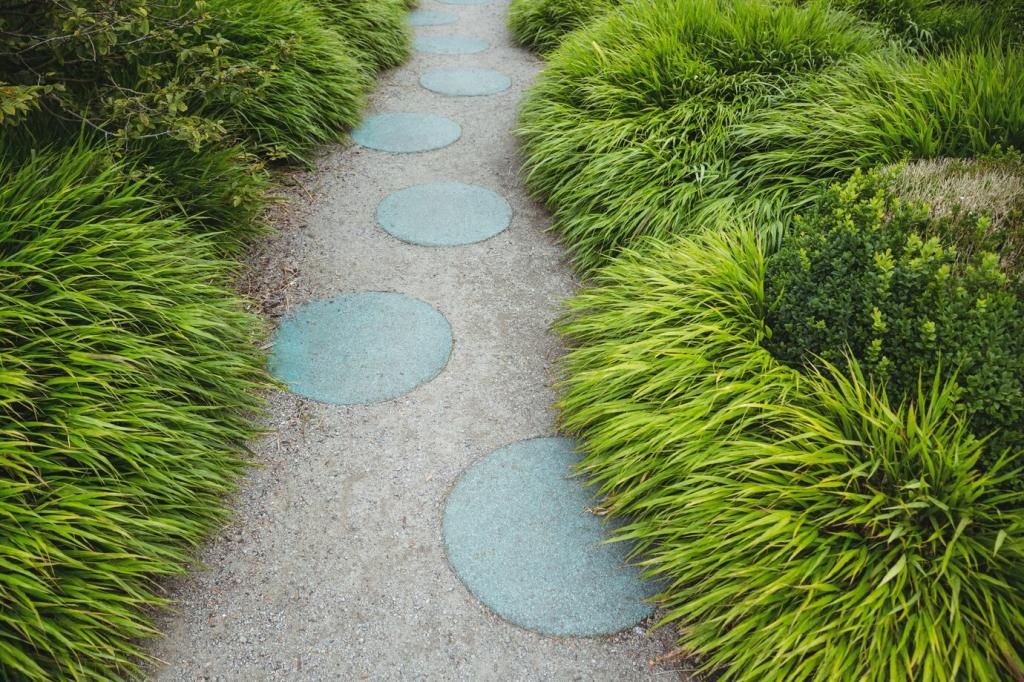
Designing Wildlife-Friendly Gardens: Invite Nature Home
Today’s chosen theme is Designing Wildlife-Friendly Gardens. Welcome to a place where beauty meets biodiversity, where every leaf and puddle can shelter life. Explore practical ideas, heartfelt stories, and proven tips that help birds, pollinators, and small mammals thrive—right outside your door.
Know Your Neighbors: Local Wildlife First
Mapping seasonal visitors
Use a simple calendar to track when hummingbirds arrive, when monarchs pass through, and when native bees emerge. Patterns quickly appear, guiding which blooms and shelter you should offer week by week.
Listening to community knowledge
Ask neighbors about nesting robins, fox tracks, or owls calling at dusk. Local stories carry priceless detail. We learned about a hidden toad haven behind a shed thanks to a casual sidewalk conversation.
Setting realistic goals
Aim for a few target species first, then expand. A small patch of milkweed can support monarchs; a berry hedge may feed thrushes. Celebrate early wins, share them with us, and encourage your street to join.

Native Plants as the Garden’s Backbone
Design layers: canopy, understory, shrubs, perennials, and groundcovers. Layers create microclimates and safe hideaways. In our test bed, wrens nested happily once shrub density increased, thanks to native viburnum and serviceberry.
Use pebble-filled trays so bees and butterflies can drink without drowning. Add a gently sloped edge for small mammals. Flat river stones warm in sun, attracting cold morning pollinators needing a quick boost.
Water Features That Welcome, Not Endanger
Direct downspouts into a rain garden planted with native sedges and flowers. You will slow runoff, recharge groundwater, and create habitat. After our first big storm, chorus frogs quickly claimed the new basin.
Water Features That Welcome, Not Endanger
Shelter, Nesting, and Safe Corridors
Stack prunings to form airy brush piles tucked behind perennials. Hedgerows of mixed natives offer blossoms, berries, and wind protection. We saw a young rabbit evade a hawk using a brush corridor.
Choose species-appropriate box sizes and entrance holes. Face away from prevailing winds and provide predator guards. Last spring, a pair of chickadees fledged successfully after we added a simple baffle collar.
Lift the bottom of solid fences a few inches to allow hedgehogs or turtles through, where appropriate. Plant living fences of hawthorn or hazel that provide shelter while guiding safe, gentle movement.


Soil Health and Gentle Pest Balance
Feed soil with compost and leaf mold. Use living mulches and keep roots in the ground year-round. Fungal networks help plants share resources, supporting resilient, nectar-rich blooms for pollinators.
Soil Health and Gentle Pest Balance
Start with observation, then cultural fixes, then targeted biological controls. Lady beetles and lacewings curb aphids. We solved a mite flare by upping plant diversity and misting strategic zones, not spraying.
Design Aesthetics That Win Hearts
Structure, rhythm, and inviting edges
Anchor beds with repeating forms like grasses or shrubs. Define crisp paths and borders to frame wilder zones. Clear shapes reassure visitors while wildlife enjoys complex, textured layers just beyond.
Storytelling signs and small invitations
Add a simple sign explaining your pollinator patch or brush pile purpose. Curiosity turns into support. Children love discovering why a log stays put, and grownups learn what to plant next.
Paths for people and pollinators
Permeable paths protect soil and guide human movement, while gaps allow butterflies to float between beds. In our courtyard, a gentle S-shaped path made photo moments and safer bee flyways.
Container guilds with purpose
Combine a nectar plant, a host plant, and a structural grass in one pot. Even a half-barrel can support bees, caterpillars, and spiders. Rotate containers seasonally to maintain continuous bloom.
Vertical layers and window sanctuaries
Use trellises, pocket planters, and window boxes to multiply space. A vine of native honeysuckle climbed our railing, drawing hummingbirds that hovered long enough for a neighbor to finally believe.
Nightlife-friendly lighting
Swap bright white bulbs for warm, shielded lights on motion sensors. Moths, bats, and fireflies navigate more safely. You will still see your steps, and nocturnal visitors gain the darkness they need.
Join our mailing list
